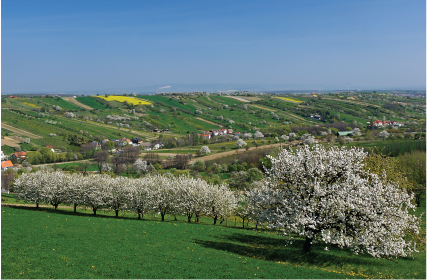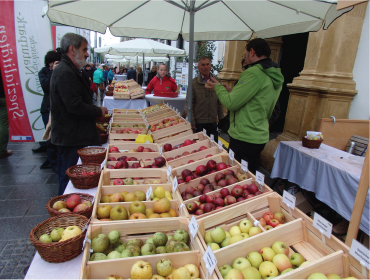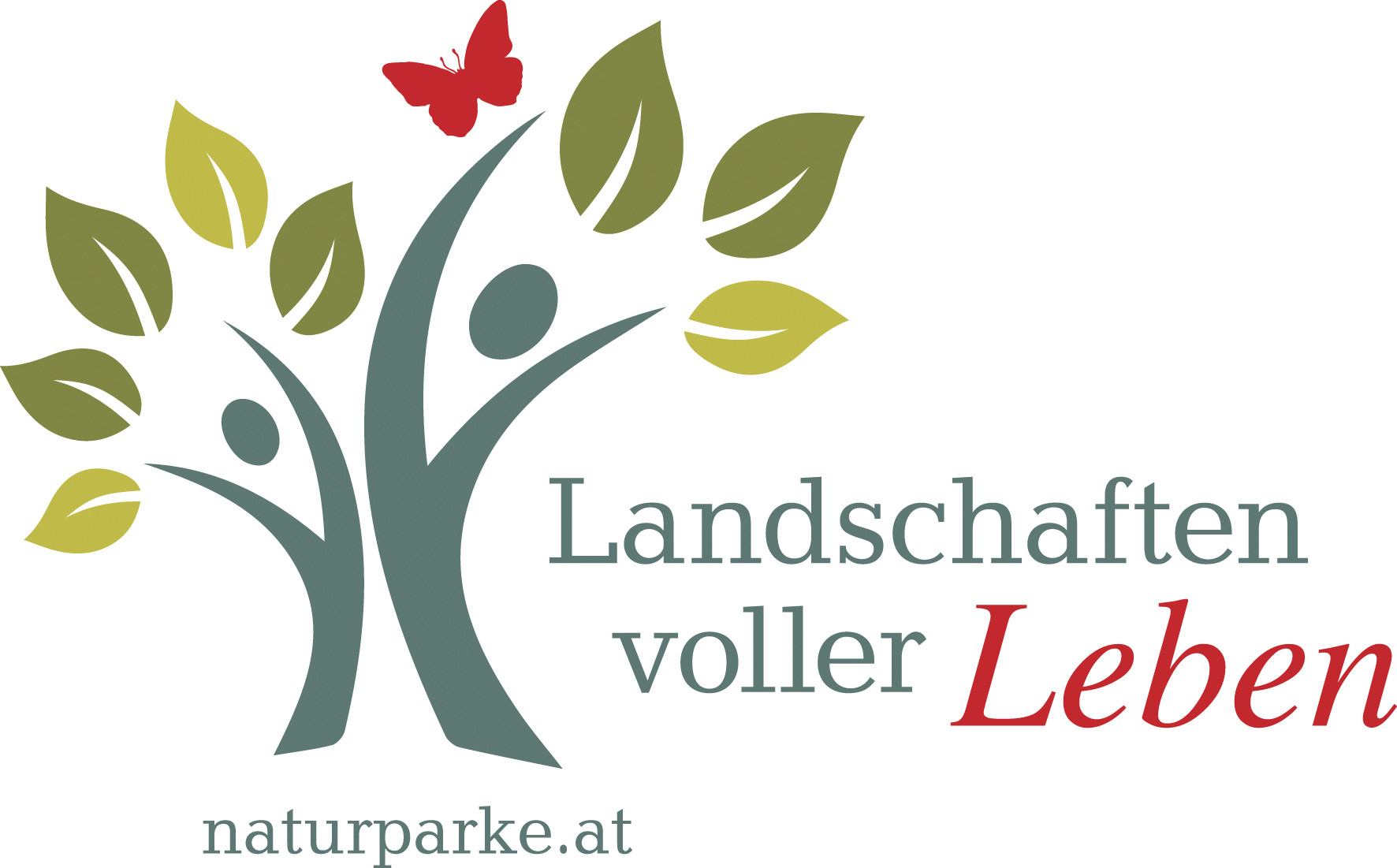Case Study
Implementation of the Biodiversity Strategy Austria 2020+ in Austrian nature parks
Contact name
Franz Handler
Institution name
Association of Austrian Nature Parks
Region & country
Austria
Summary
In 2011, the European Commission enacted a new strategy to reduce the loss of biological diversity and to improve the condition of European species, habitats, ecosystems, and ecosystem services. The EU has summarized the biodiversity strategy in 6 goals. These goals have been specified within the Biodiversity Strategy Austria 2020+ – for 5 areas of activity 12 goals have been formulated. It has been enacted in Autumn 2014.
During a multistage process, a structure and a catalogue of measures for the implementation of the biodiversity strategy in Austrian nature parks have been developed. To do so, stakeholders at the nature park, provincial and federal level have been involved.

Diverse landscape creates biodiversity
Photo: Franz Kovacs

Biodiversity in agriculture (example of apples)
Photo: Association of Austrian Nature Parks
Background of the project
The changing habitats, climate change, change of use and altered usage, introduced non-resident species, excessive use and environmental pollution are the main reasons for the loss of biological diversity, not only worldwide but also in nature parks. At the nature park level, no documents and guidelines existed to implement the Austrian Biodiversity Strategy.
Development of thematic priorities for the implementation of the biodiversity strategy in nature parks in collaboration with representatives of the provinces, nature parks as well as experts.
Drawing the connection between the strategy and the 4 pillars of nature parks
- protection,
- education,
- recreation,
- and regional development
Development of a suitable structure for the implementation at the nature park and provincial level as well as within the Association of Austrian Nature Parks.
Solution and actions taken
The development of a catalog of measures that set the scene for concrete implementation projects for the Biodiversity Strategy Austria 2020+ in nature parks. This catalog is also supposed to consider and draw the connection between the goals of the Austrian Biodiversity Strategy and the 4 pillars of nature parks.
The implementation of the biodiversity strategy can only be successful through the joint endeavor of many partners.
Workshops in all nature park provinces on province specific priorities and implementation structures.
Discussions at the federal level to adjust nationwide parameters
Development of a framework of measures for the cultural landscapes that are of significance for nature parks due to their high prevalence, biodiversity and characteristic landscape.
Other institutions or parties involved
Austrian nature parks
Provincial nature park organizations of Styria and Burgenland
Provincial Governments – Department for Natural Protection
Federal Ministry for Agriculture, Forestry, Environment and Water Management
Results
Now, there is a strategy paper that is derived from the European, more specifically the Austrian strategy paper, that points out measures for implementation explicitly for nature parks. Furthermore, a common understanding of the topic of biodiversity has been reached.
So far, there are numerous implemented measures (slogan, logo, communication mediums such as the manual and best-practice examples, campaign day for schools, …)
Challenges
The stakeholders had a completely different understanding of biodiversity. For a successful implementation of biodiversity activities, an optimal collaboration at the regional level (the different nature parks), provincial level (provincial governments, sometimes provincial nature park organizations) and at the nationwide level (Association of Austrian Nature Parks) is essential. Reaching a common understanding was posing a challenge.
Lessons learned
A common understanding of biodiversity is essential for the successful implementation of the biodiversity strategy.
The implementation of the strategy is only successful if the measures are collectively developed through a bottom-up approach instead of top down.
Humans are the central shapers of cultural landscapes and therefore, must be part of every protection concept, in every project and in every measure.
Contact name
Franz Handler
Institution name
Association of Austrian Nature Parks
Website(s)
